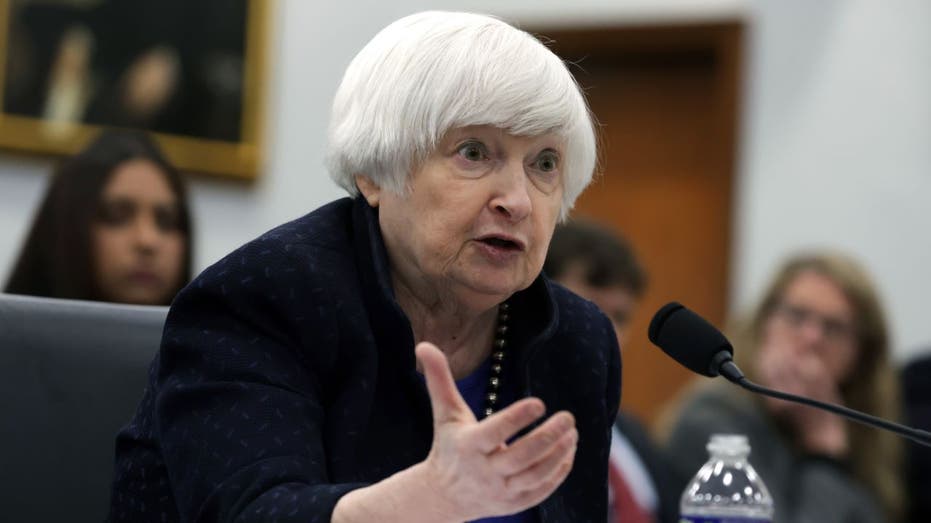QI Research CEO Danielle DiMartino Booth and Parametric Managing Director for Fixed Income SMA Nisha Patel discuss the impact inflation is having on the U.S. economy on ‘Making Money.’
Federal Reserve Chair Jerome Powell has been so eager to take credit for engineering an economic soft landing that he’s now made one much harder to achieve. His prediction this week that the next move in interest rates is likely to be down, rather than up, perpetuates his mistake. A little more restraint in recent months would have served the Fed chair, and the economy, much better.
The Marshmallow Test is a psychological experiment designed to measure delayed gratification in children. Developed by psychologist Walter Mischel in the early 1970s, the test places a child in a room with a marshmallow and offers them a choice: They can either eat the marshmallow immediately or wait for a specified period, usually around 15 minutes, and receive a second marshmallow as a reward for their patience. The test became famous for its implications regarding self-control, willpower and future success.
Powell faced his own version of the Marshmallow Test this past fall. Following a nearly 20% rise in the price level from early 2021 and the fastest Fed hiking cycle in the past 40 years, Powell finally appeared to be getting inflation under control.
FED PRESIDENT SAYS NEXT MOVE LIKELY TO LOWER RATES, BUT TIMING UNCERTAIN
Core Personal Consumption Expenditures (PCE) inflation had decelerated to 2% annualized by the third quarter of 2023 and financial conditions had tightened materially. A soft landing and achievement of the 2% inflation target appeared well within his grasp. He just needed to refrain from devouring the proverbial marshmallow of rate cuts and keep financial conditions tight for a few more quarters. Alas, he ate the marshmallow.

Treasury Secretary Janet Yellen was one of the major figures pressuring the Fed to lower interest rates. (Alex Wong/Getty Images / Getty Images)
To be fair, Powell did come under tremendous political pressure to loosen monetary policy, with former Fed Chair and current U.S. Treasury Secretary Janet Yellen telling CNBC last December that it would make sense for the Fed to consider lowering interest rates.
Not to be outdone, President Biden himself waded into monetary policy numerous times in recent months, telling an audience in Philadelphia earlier this year, “I can’t guarantee it. But I bet — you betcha — those rates come down more, because I bet you that that little outfit that sets interest rates, it’s going to come down.”
GET FOX BUSINESS ON THE GO BY CLICKING HERE
At the Federal Open Market Committee (FOMC) press conference in December, Powell pivoted to a notably more dovish stance, suggesting that the Fed was more focused on when to cut rates than when to increase them despite the symmetrical language of the FOMC statement, and despite Fed’s own projections that inflation would exceed the 2% target for the next two years.
Powell’s dovish December pivot unleashed a dramatic easing of financial conditions and sowed the seeds for the inflation resurgence we are now experiencing. Indeed, the S&P 500 increased by 11% in the subsequent three months and high-yield credit spreads declined by more than 70 basis points.
Calamos Investments President and CEO John Koudounis doesn’t predict a rate hike from the central bank and says there’s still money on the market’s ‘sidelines.’
The resulting wealth effects will now ensure that the pace of consumption growth remains inconsistent with a return to 2% inflation. Since December, Core PCE inflation has rebounded to 3.7%, and Core CPI (Consumer Price Index) has increased even more strongly, up 4.5% annualized in the past three months.
If only Powell had refrained from signaling rate cuts in December and stuck to the “higher for longer” script, the economy could have slowed sufficiently to allow actual rate cuts in the coming months. Undoubtedly, the Fed will still be under tremendous political pressure to do so ahead of the November election, but rate cuts are likely off the table indefinitely with inflation so high.
Powell’s lack of self-discipline has distributional consequences. While the top 20% of households have gotten a tremendous boost to their asset portfolios from Powell’s dovish turn, the bottom 50% is struggling.
Not to be outdone, President Biden himself waded into monetary policy numerous times in recent months, telling an audience in Philadelphia earlier this year, “I can’t guarantee it. But I bet — you betcha — those rates come down more, because I bet you that that little outfit that sets interest rates, it’s going to come down.”
With few assets and relatively higher floating-rate debts, they will ultimately pay the cost of “higher for even longer.” According to the Federal Reserve Bank of Philadelphia, credit card delinquencies, at 3.5%, are the highest they’ve been since the survey began in 2012.
CLICK HERE TO READ MORE ON FOX BUSINESS
If the FOMC took the inflation target seriously, it would reverse Powell’s December pivot and remove the easing bias altogether, signaling that the next move could well be a hike. At his recent press conference following the May FOMC meeting, Powell was given ample opportunity to do so. For now, he remains reluctant to give up the easing bias. But he can only hold out for so long if inflation continues to come in so high above target and the Fed’s own forecasts.
If only he hadn’t eaten the marshmallow.
Scott Bessent serves as chief executive officer and chief investment officer for Key Square Group LP, a Connecticut-based investment partnership that he founded in 2015.